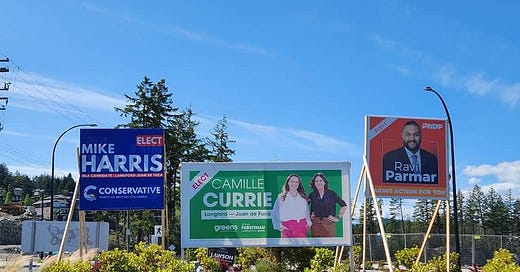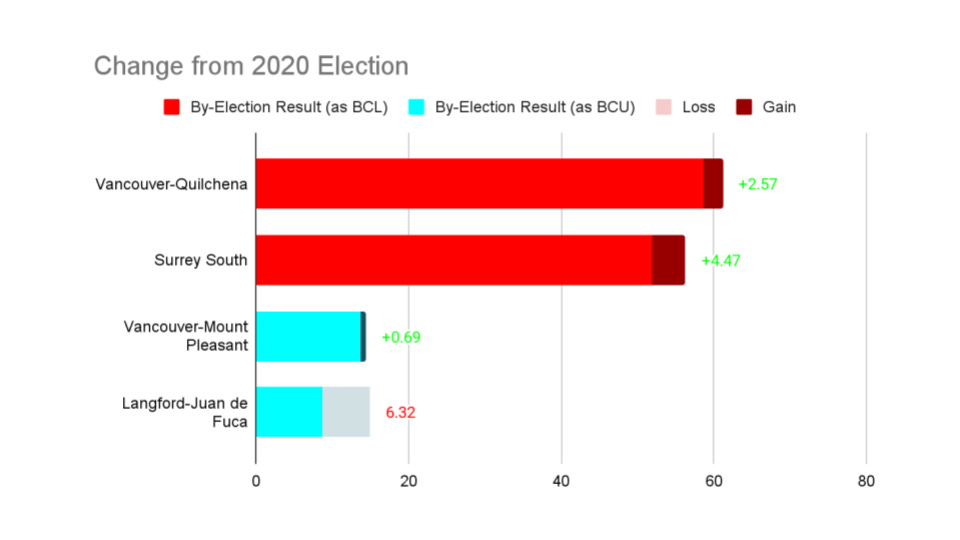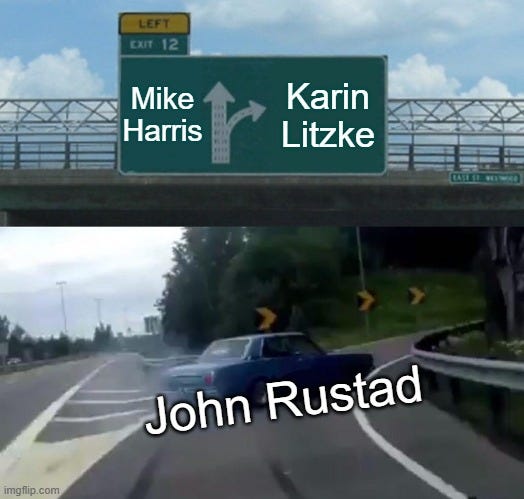As political pedants will tell you, the provincial election won’t be a single election, but 93 separate elections happening at the same time. Each riding has its own unique circumstances and local factors, and while broad polling and analyses are usually accurate overall, they frequently miss out on little details that make elections exciting. In by-elections, the focus on one or two ridings means a spotlight on these elements.
One of the prevailing thoughts is that by-elections do not matter. As they do not change who is the government, only a few deeply invested people show up to vote. Because there is not the province-wide movement to get out and vote, people often don’t even know it is happening.
On the other hand, I personally believe that by-elections matter a lot. They give parties a chance to build local organizing, see how quickly they can get out and campaign, let a candidate get some experience on the ground, and test how the public responds to their campaign messaging. If the stars align, a by-election can set the stage favourably (or badly) for a party's chances in the general.
Since the 2020 election, BC has had four by-elections, the latter two being held at the same time:
Vancouver-Quilchena, following the resignation of BC Liberal leader Andrew Wilkinson
Surrey South, following the resignation of BC Liberal MLA Stephanie Cadieux
Vancouver Mount-Pleasant, following the resignation of NDP MLA Melanie Mark
Langford-Juan de Fuca, following the resignation of Premier John Horgan
In each case, the incumbent party won back their seat, so the make-up of the legislature did not change in any of these by-elections. Still, on a numbers level, they indicate shifts that may play into the 2024 election, more so for the opposition than the government.
Let’s look at what these by-elections mean for each party.
Governments usually fare poorly in by-elections
It’s common wisdom that governments generally do poorly in by-elections compared to the general. The reasoning is that, since the by-election won’t unseat the government from power, it is an opportunity for the most frustrated parts of the electorate to be heard, and a common narrative in by-elections is what kind of message a newly elected member can bring to the government of the day.
The BCNDP have maintained this trend, only gaining a fraction of a percent in the Vancouver-Mount Pleasant by-election and dropping in the rest. For the most part, none of these numbers are surprising or unexpected, and the two seats they held going into the by-elections (Mount Pleasant and Langford-Juan de Fuca) they won handily. The drop in Surrey would be the one to pay attention to, which was won by…
By any other name would smell as sweet?
The BC Liberals, now BC United, rebranded in-between the by-elections. The first test of their new brand was during the dual Mount-Pleasant/Langford-Juan de Fuca by-elections, both being considered “safe” NDP seats.
Pre-rebrand, they were showing marginal gains in two seats they already held. Post-rebrand, there was immediate concern regarding the drop in Langford-Juan de Fuca, where the BC Conservatives went from not running a candidate in 2020 to second place. The BC United candidate said herself that people at the doorstep did not recognize the new brand.
Even if BC United was not expected to win in either riding, it crafted a narrative that they were in trouble to see such a difference in their vote share. But the dramatic shift was not just because of their loss, but because of who gained. That leads us to…
The tale of two campaigns
The BC Conservatives did not run a candidate in any of the ridings that had by-elections since 2020. Because of this, they had only one direction to go: up.
And up they went.
One reasonable explanation is that, with an explicitly Conservative option on the ballot, people who otherwise would have not bothered to vote showed up. It's possible that, had the BC Conservatives run candidates in these ridings in 2020, these are the results they would have gotten. Where the Conservatives did run candidates, finishing in the low teens was fairly common.
What is maybe more noteworthy is the difference between the campaigns in Mount Pleasant and Langford-Juan de Fuca. In the latter, Mike Harris campaigned on simple messages of building infrastructure and lowering taxes. He eschewed online debating for getting out and knocking on doors, and as a result the riding was covered with his signs. He surprised everyone on election night, coming in second place with 19.9% of the vote.
Meanwhile in Mount Pleasant, BC Conservative candidate Karin Litzke, who had previously run with the BC Libertarians and federal People’s Party, ran on one core message: transgender people are bad. While Harris talked about putting a commuter rail line to the western communities, Litzke spent her time on Twitter defending an old man who demanded to see a child’s genitals at a sporting event. She finished fourth with 4.9%.
This presents two directions for the newly ascendant Conservatives under Rustad: focus on the issues that affect people in their day-to-day lives, as Harris had, or focus on the angry comments of terminally online people and target marginalized people.
Rustad seems to have chosen the latter.
That being said, Harris has been nominated again and is registered to take another run at things in the new riding of Langford-Highlands.
And, most importantly, the narrative out of the Langford-Juan de Fuca by-election became about the loss by BC United and gains by the BC Conservatives, setting the stage for their surge in polling and legitimacy as an alternative to the current government.
Wither the Greens
For Green parties across Canada, by-elections are often their biggest opportunity. Where I live in Victoria, the federal Greens came within spitting distance of winning the seat in a 2012 by-election. Calgary Centre, not exactly a “target-to-win” for the party, saw a Green take 26% of the vote in a by-election that same year. Winning a second seat in a by-election on Prince Edward Island in 2019 shifted the narrative in that province so dramatically that the party almost won government, and formed opposition after election night. The Ontario Greens doubled their caucus in a by-election this last year.
Not so for the BC Greens.
It’s the Greens who lost the most when looking at these results, dropping by dramatic margins in all but one of the by-elections since 2020. The loss of the party’s previous vote share is striking — more than a third in Quilchena, over half in Surrey South, and 42% in Mount Pleasant. For the first time in a decade, the party fell to third in the East Vancouver riding that, in a previous by-election, they had gotten 27% in.
The one exception was Langford-Juan de Fuca, showing that the party still can hold their own on Vancouver Island. Despite the Conservatives surging to almost 20%, the party still gained slightly.
At the time, BC Green leader Sonia Furstenau had announced plans to run in the new riding of Juan de Fuca-Malahat, which includes her home-at-the-time of Shawnigan Lake and a decent chuck of the riding contested in the by-election. Less than a year later she announced she would instead be parachuting into Victoria-Beacon Hill.
What does it all mean?
Depending on who you ask — anywhere from nothing to everything.
These by-elections had zero impact on the government itself, with each party holding its previously held seats and government business continuing as usual.
But in terms of narrative — the damage done to BC United by rebranding; the legitimacy of the BC Conservatives; the challenges faced by the BC Greens — they have had a huge impact. It is hard to imagine the BC Conservatives polling in the mid-30s without Harris’ second-place finish to give them a boost. It’s also unlikely Furstenau would have switched ridings if her party had performed better.
The bigger question is whether the parties took the lessons voters sent them in the by-elections and adjusted their 2024 campaign plans accordingly.











Good analysis. The one thing I look at with by-electiona is raw votes compared to the general. The percentage feel so skewed but I've often seen strong parties maintain their total number of votes, even as turnout drops by half. Obviously the Conservatives do well in this metric (anything is better than nothing) but I'd have to go back to the results to judge each again.